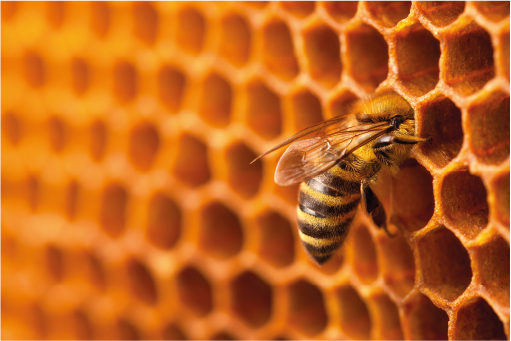Bees are one of nature’s prime pollinators, but they are struggling. Bee populations around the world are declining. But rest assured, it is not all doom and gloom in this article. Let me explain you why we host a bee colony on our headquarters’ rooftop and show you how we harvest its honey every year.
Written by Jan Van Der Schueren, Head of Site Operations
What’s the buzz about?
Our offices and labs our usually buzzing with activity, but it can be quite busy on our HQ rooftop in Mechelen (Belgium) as well. While our purpose is to deliver more years of life and quality of life to patients by developing transformative medicines, our upstairs neighbours are collecting nectar and pollen from plants and flowers in the area to feed their colony. By now you probably guessed that I am talking about the honeybees we are hosting on our roof. It does not stop in Mechelen: we plan to install and host a bee colony on the roof of our new building in Leiden (Netherlands) too.

This initiative is part of our broader sustainability and corporate citizenship ambitions. The health of our planet and the health of people are interconnected. We pay attention to the impact we have on our planet, and how we could reduce or improve it. Hosting bee colonies on our buildings is a humble contribution to local biodiversity, and it also offers the opportunity to connect our colleagues and educate them during the annual honey harvest. And yes, admittingly: we like honey.
Honey harvest 101
The harvesting is done in collaboration with the beekeepers from Nectarist. The honey harvest is a process that involves a few steps. First, the beekeeper retrieves the wooden honeycomb frames filled with honey from a “honey super”, which is an extra hive box on the roof. Once the bees have filled the honey super and sealed the comb with wax, it is ready to be harvested. Generally, this is done in summer and autumn months.
The beekeeper takes the frames out of the honey super. This is when our Galapagos colleagues come into play. First, they carefully remove the wax capping so the honey is exposed in the comb. Then the frames with the exposed honey are put in the honey extractor. Using centrifugal force, it extracts the honey from the comb. Just a couple of swings are enough to push the honey out of the comb and against the sidewalls of the extractor. This method allows the beekeeper to reuse the frame with the comb in the honey super.
Once all the honey from the frames is extracted, the sweet golden liquid is filtered and filled in jars. And of course, a cook never sends out a dish without tasting it. I can assure you, that first spoonful never tasted better!
Want to see more? Check out our photo montage and video below!
Sharing is caring
All our Galapagos harvesters received a jar with fresh honey as a thank you gift. But of course, it’s not about the gift but about the unique experience to see first-hand how wonderful bees are and to learn about their crucial role in our ecosystem. They become “honeybee ambassadors”.
The rest of the honey harvest is donated to the less fortunate via a local foodbank in Mechelen.
About Jan
Hi, I’m Jan. I joined Galapagos at the very beginning in 1999. As Head of Site Operations, I oversee our activities in our headquarters in Mechelen. I also represent Galapagos in sector organizations and initiatives such as Medvia. I am convinced that we can give back to society as a company through the development of new medicines, and also through good corporate citizenship. That’s how we are #PioneeringForPatients.